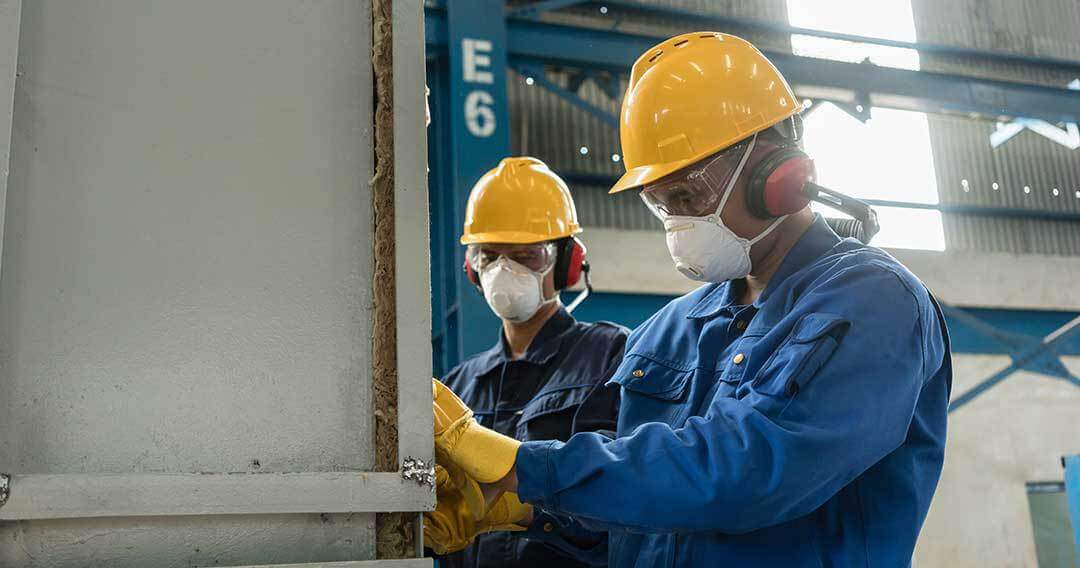COVID-19 has posed many risks to a variety of industries and businesses. Manufacturing employees, in particular, suffer a higher risk during pandemic conditions because they are considered essential, which puts them in the path of virus transmission. In this article, we outline the risks manufacturing employees face and describe how manufacturers can leverage technology to protect their workers to promote safer, more efficient operations during COVID-19.
Risks to Manufacturing Workers from COVID-19
Manufacturing employees run a greater risk for catching COVID-19 than employees in sectors that have more telework options. It’s difficult to consistently maintain at least 6 or more feet between workers on the floor. Rearranging the shop floor to create optimal physical distancing conditions requires significant time, effort and expense. Workers are often in close proximity with each other for a shift lasting between 8 to 12 hours. It’s very easy for viral transmission to occur through droplets in the air from sneezing, coughing, talking, or touching contaminated surfaces. Under these circumstances, it’s very difficult to prevent the spread of COVID-19, especially in areas where community transmission is already high.
A Snapshot of Safety Under the Cloud of COVID-19
The National Association of Manufacturers (NAM) surveyed manufacturers and reported significant impacts on manufacturing operations due to COVID-19. Although the survey ran back in February and March of this year, just as the pandemic was hitting America’s shores, the manufacturing sector was already dealing with supply-chain disruptions from COVID-19 shutdowns in China and elsewhere. 53 percent of businesses were facing changes in how they operate due to the pandemic, and almost three quarters of those surveyed were bracing for financial impact.
Data from the CDC highlights stark trends in workplace absenteeism for essential businesses like manufacturing between October 2019 and April 2020, compared with five-year historical baselines. Some occupations saw health-related absenteeism decrease, particularly for employees who could work from home. Production and manufacturing workers, however, logged a dramatic increase in health-related absenteeism during the March-April 2020 period, largely because they are unable to avoid workplace exposure to the virus. It is a challenge for many essential businesses like manufacturing to accommodate the necessary safety guidelines like physical distancing required to slow and stop virus transmission. Moreover, if a worker tests positive for the virus, they will spend at least two weeks out of work on quarantine, as will the other co-workers who came into close contact with that worker. And that’s the least that could happen. Sadly, some workers may become critically ill or even die from the virus. Clearly, mitigating the safety risks of COVID-19 for all workers is extremely urgent.
In fact, the National Safety Council (NSC) also adds that COVID-19 presents new and unprecedented challenges for manufacturers and their employees. Businesses have spent years trying to improve worker safety from more traditional injuries like falls, equipment malfunctions and the like. But keeping workers safe from the virus is proving to be a challenge. In 2020, the NSC expects COVID-19 to unseat preventable injuries as the third leading cause of death in the U.S., sending preventable injuries to fourth place. For the data available, the NCS reports that there were 37,455 deaths from falling in 2018.
The Center for Systems Science and Engineering at Johns Hopkins University reports over 180,000 U.S. deaths from COVID-19. Those who work in manufacturing are at a higher risk of transmission and infection due to the nature of their work environment. Without technological advances and improvements to remote work, it’s hard for manufacturers to create the conditions that enable workers to follow recommended safety precautions against catching the virus, especially social distancing. But there is hope; technology is available right now that can help provide added guidance, collect data remotely, and help companies stay open with improved insights around worker safety protocols.
Using Technology to Mitigate COVID-19 Risks for Manufacturing Workers
Decision makers within any business recognize that building a resilient company requires adopting new ways to improve workers safety during the pandemic and beyond. Anvl’s solutions can be a major part of this shift to improve manufacturing operations in these major ways:
- Using digital systems and analytics to provide worker guidance and identify ways to maintain efficient operations and visibility by remote work.
- Decrease the amount of paper-reliant operations to reduce physical contact between workers and increase productivity within the workspace.
- Using technology to pre-check contractors and provide employee screenings.
Anvl provides digital transformation technologies to empower manufacturing operations to make significant strides toward a safer work environment for manufacturing employees, especially during a pandemic. Our software brings real-time visibility and communication tools that keep employees, supervisors and management connected and communications transparent, even when working from home. We’re ready to support your return-to-work needs and continued productivity with worker guidance, data capture, and real time insights.


